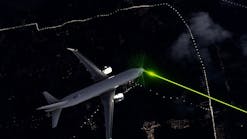Innovative Digital Technology Delivers Far More than Simple Cost Savings for Airports
The growth of global air travel, increasing infrastructure constraints and higher traveler expectations have created a new challenge for airports: how to maximize existing facilities and deliver value to all stakeholders. This summer, the International Air Transport Association (IATA) warned that an increasing number of airports do not have the capacity to handle all the flights airlines want to deliver. And with global passenger numbers set to double within the next 20 years, the pressure is on for airports to adapt to a new environment.
It is against this backdrop that Amadeus commissioned Arthur D. Little to assess the potential of digital technologies within the airport environment.
The study highlights how new technologies will help airports to achieve greater efficiency and reduce cost, but also, how embracing the concept of digital transformation will allow them to meet the increasing expectations from passengers, airlines and stakeholders.
The report also identifies a number of barriers to digital investment, including a lack of strategic clarity on digital transformation, lack of collaboration between airports and airlines and issues with non-digital mindsets within airport environments.
The report defined three clusters of technologies, which airports are likely to focus on:
- Core enabling technologies – such as big data and cloud technology
- Process automation and integration – such as the Internet of Things, mobile technologies and smart energy systems
- Fringe technologies – like virtual modelling and blockchain
John Jarrell, head of airport IT at Amadeus, said, “As the expectations of passengers, airlines and shareholders grow, airports must maximise their existing infrastructure, improve efficiency and ensure that their proposition delivers value to all stakeholders. This report demonstrates that digital technology is enabling them to achieve these objectives. The path toward airport digital transformation is not an easy one, but all of the airports interviewed for this research have already begun the journey of digital evolution – with different maturity levels – and recognize that digital transformation efforts can yield true step-change potential.”
Russell Pell, managing partner at Arthur D. Little, said, “This report highlights the truly transformative potential of digital technology for airports, with tangible benefits that go far beyond cost reduction. While many airports have begun the journey of using digital to aide passenger processing, airports of all sizes must confront and overcome a number of cultural and organizational barriers to change, with a sustained commitment to digital transformation.”
Little interviewed senior executives at more than 15 major airports worldwide to inform the study, and incorporated views from a variety of industry experts.


